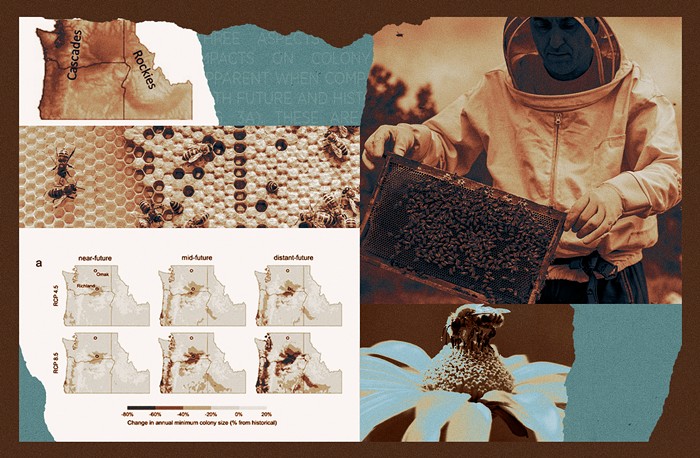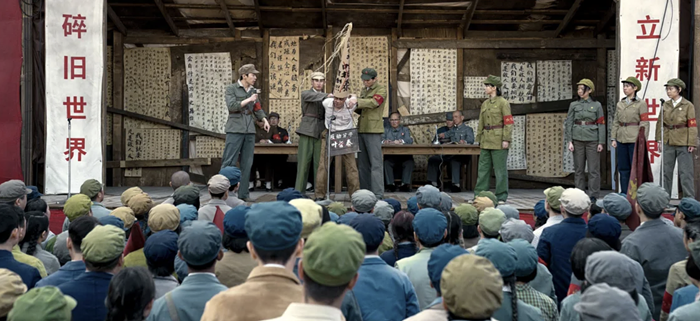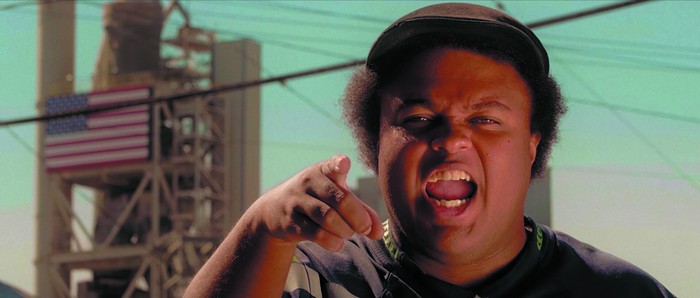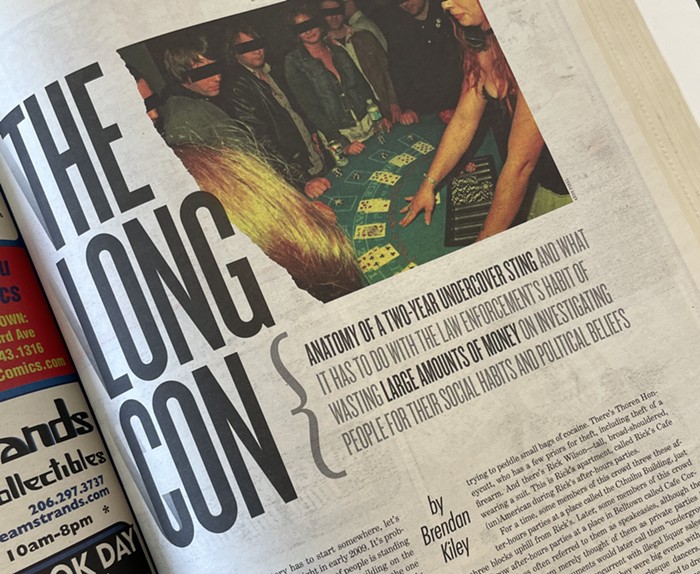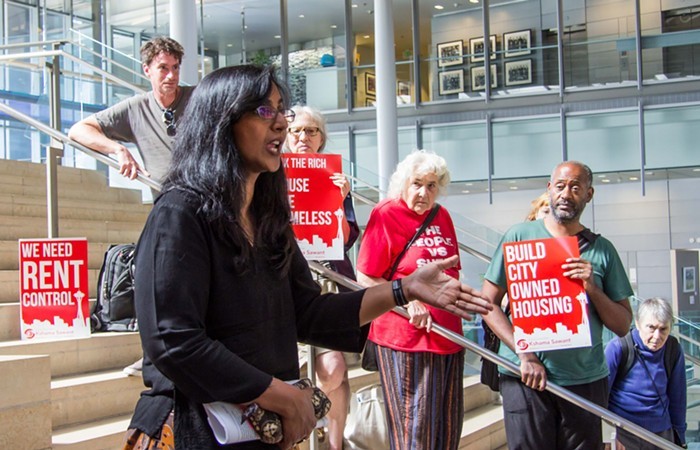
We regret to interrupt your Hot Vax Summer of short shorts, hard seltzer, and group sex to inform you that Seattle is getting its apocalyptic back on again. Temperatures are expected to reach the mid-90s today and tomorrow, and the dull white haze of wildfire smoke has lurched in from California. Add to that the latest IPCC Climate Report of Doom and it’s enough to give you a severe case of solastagia.
But Susan Prichard, a fire ecologist with the UW’s School of Environmental and Forest Sciences, is actually optimistic, thanks to a new report she co-led that examines the dire state of Western forests, which are currently burning up like a four-year-old’s marshmallow. Issued last week, the report synthesizes more than a century of research on forest health, and the study finds that 100 years of aggressive firefighting, combined with increasingly severe effects of climate change are leading to sick, overgrown forests that burn destructively. But a new approach could help them recover.
Slog chatted with Prichard about her findings, reasons for optimism, and that evil villain known as Smokey Bear.
We pruned this interview for clarity.
THE STRANGER: Here in Seattle, we have another heat wave on the way, wildfire smoke is expected soon, and the latest UN report on climate change is pretty stark, saying that we’re in a “code red” climate emergency. What does your study confirm about climate change making this really crappy wildfire situation even worse?
SUSAN PRICHARD: It’s such a sobering topic that a lot of us in the field of fire ecology are ready to move beyond the narrative of ‘oh is this evidence of climate change?’ We are living climate change, we’re breathing climate change — so what can we do about it? At the same time we hope our societies curb anthropogenic emissions and slow the steady and scary progress of climate change. In terms of what we’re learning, there’s actually some hope. I think it’s very important — I’ve got teenagers — to emphasize that there’s still a lot we can do.
When it comes to the dry forests of eastern Washington, it’s not all doom and gloom. It’s really important to recognize that yeah, summer wildfires are burning really intensely and over large areas, and I’m concerned about them. But there are ways to get ahead of them and change some of the outcomes. So a lot of our work in these papers is to carefully document that there have been major changes as a result of taking fire out of these landscapes and major benefits from intentionally putting fire back in.
Let’s talk about that. One of the counterintuitive findings of this study is that a huge problem is that there’s actually been too little fire in many of these Western forests rather than too much.
It’s a really difficult topic to cover for those of us who are really tired of the smoke and alarming wildfires. To then say — well actually we’ve had too few wildfires — is not a great selling point. But the reality is that on both sides of the Cascades, but especially in Eastern Washington, the lower elevations had fires every five to 25 years. Higher elevations were less frequent. Across a range in elevations, fire was so frequent that it tended to limit the size and severity of the next fire.
I think that’s a really important point: when Euro-Americans moved in and killed and displaced Indigenous people, those important cultural Indigenous burns were massively reduced. People, as they settled, didn’t want wildfires burning their homes of course, and so there was a pretty big effort in reducing the number of wildfires. Add in 80 to 100 years of a lack of fire in our forest land and that’s allowed trees — like Douglas fir — to invade grasslands, shrublands, and meadows and also fill in Ponderosa pine-dominated forests, making those forests a lot denser, a lot more prone to drought mortality, insects, disease, and severe fire.

From what I’ve learned from the very humbling aspects of Indigenous burning is that there were a lot of people here before smallpox hit our continent. Even thinking about the Willamette Valley, where I still have an old family farm that was homesteaded in the 1870s — the Willamette Valley had thousands of people living within it and cultural burning was very common: oak woodlands and pine savannahs were very common. The practice of Indigenous burning was varied and had a lot of nuance to it, but in general, as people lived within fire-prone landscapes, actually working with fire and intentionally setting fire in grasslands and forests meant the next fires that came were less intense and less damaging. The fires not only opened up areas for hunting and gathering and farming but they also made fire a more benign visitor when it came.
I was thinking there’s a metaphor here between fighting fires and increasing policing in response to crime. They both seem like a band-aid approach to problems that need a much deeper, more nuanced series of approaches and solutions.
I like that. We’ve also been talking about fire in light of COVID. Fire can be used as a vaccination. We can have some fire come in through prescribed burning or even manage wildfires at the end of the season when snow and rain is just about to come — having some of those fires vaccinate our landscapes and our communities. So that when fire does hit, it’s not as damaging.
So what do you think of the recent decision by the U.S. Forest Service to temporarily ban the setting of those prescribed fires, these “good” fires?
I actually participated in a letter from over 40 scientists to the new chief of the Forest Service asking him to reconsider that decision. A blanket approach to banning the use of managed wildfire doesn’t make sense, especially in light of the fact we’ve got a record monsoon in Arizona and New Mexico. It’s a really great opportunity where fuels are so wet and less volatile to actually make use of some fire.
Here in Washington state what do you think about the job that Hilary Franz is doing at the Washington Department of Natural Resources? Do you feel that DNR’s 2020 Forest Action Plan does enough?
I’m really impressed with how DNR has invested in top-notch scientists to lead their dry forests restoration strategy in Eastern Washington and start addressing wildfire risk across our state. It’s exciting when you see state agencies invest in science and really use science-based decisions. Overall, I’m really excited about the trajectory DNR is on. It’s a big shift to a course correction. What I mean by that is much like Cal Fire in California, Washington DNR has been in the business of putting out fires for decades. And now it finds itself in a new prospect of actually adding fire to the landscape, and that will take some time. Many of us who are trying to guide climate change adaptation of our forests are impatient for DNR to effectively be able to do prescribed burning, but that’s coming.
So what about the U.S. Forest Service? What’s your opinion of them? I imagine you’re not a big fan of Smokey Bear.
My son, when he was about seven, came home from a field trip from the Methow Valley and he’s like: ‘hey Mommy, I met Smokey the Bear.’ And I was like, ‘you did?’ And he said, ‘yeah! And I told him you don’t like him!’ And I was like ‘oh no, I’ve really gotta kind of watch myself.’ Anyway, I think it’s a fair thing to say that I was schooled by the moment and I would say Jennifer Balch and others have done a really good job documenting that there are many parts of the United States close to communities that are actually getting too much fire.
It’s a little bit of a Goldilocks situation: where there are too many escaped burn piles and campfires and fire is too frequent and we can see an erosion of forest to non-native grasses like cheatgrass. In that sense, Smokey’s message is as relevant as ever. But for those of us who are really nervous about all these summer wildfires having pretty damaging impacts to our Western forests, that’s where I’d love to see the Forest Service be able to really increase the pace and scale of fuel reduction treatments. I think the Forest Service has been trying but they’ve been dealt a really rough hand with firefighting costs.
So, do you believe these smoky summers are just a new normal for us?
So many of us don’t love the term ‘new normal.’ I do think that the Pacific Northwest that I grew up in on Whidbey Island — where we were guaranteed a lot of rainy days and clear skies — it’s sad to think that those summers are for the most part over. With Western wildfires literally heating up, we will have a lot more smoke. I do think that locally, with a lot of effort toward reducing the fuels that burn in wildfires — specifically, the downed wood, the tree needles, the grasses, the shrubs — making less fuel to burn means less smoke overall. But we have 80 to 100 years of fire exclusion and so unfortunately for us all across the West coast, including British Columbia, we still have plenty of fuel to burn in summer wildfires.
